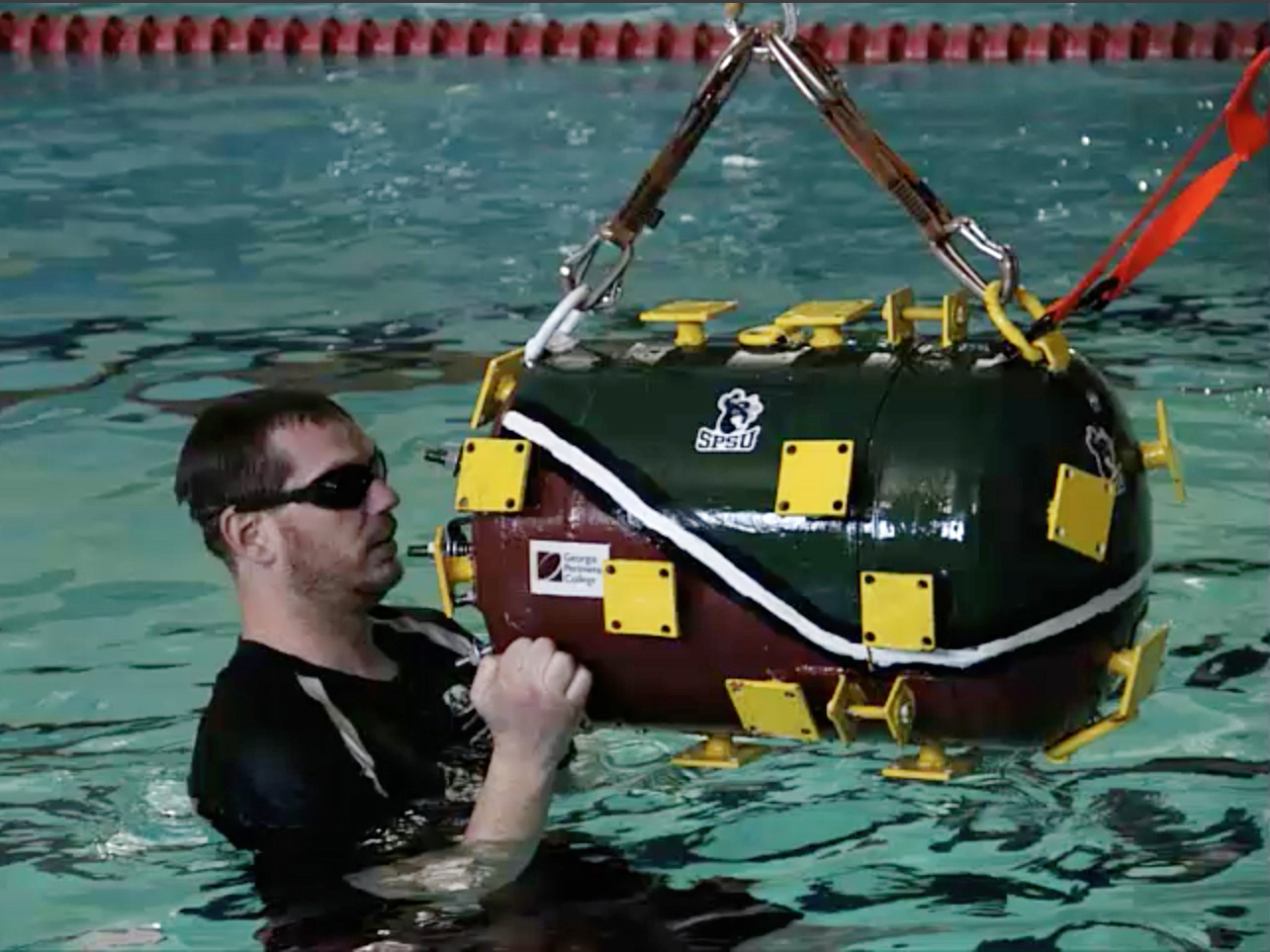
William Howard examines “TIM” during test at GPC Clarkston Campus pool.
‘TIM’ aims to take oceanic research to new depths
It’s a Sunday evening, and there are strange goings-on in the pool at Georgia Perimeter College’s Clarkston Campus. The room is darkened, and a 400-pound computerized steel cylinder has been lowered into the pool’s deep end. With lights flashing, the device surveys the pool’s terrain, taking photos and video as it goes.
The cylinder isn’t a robot invader or a prop for an upcoming film. It’s the brainchild of GPC alumnus William Howard and a group of GPC engineering club enthusiasts.
Dubbed “TIM”—short for “Taking Images in Mariana”—the submersible’s strength, water-tightness and ability to operate independently are being looked at during the Sunday evening pool test. The night is just one of many tests to assess TIM’s readiness for its ultimate mission: to go where no human can go—almost 7 miles down into the Mariana Trench in the western Pacific Ocean.
Howard sees the Mariana Trench as a great untapped resource that can provide practical solutions to "earthly" problems by studying how its creatures have adapted to extreme conditions. TIM also could be used elsewhere in situations such as the Gulf of Mexico’s BP oil spill, where the submersible could collect soil and water samples at the bottom of the gulf, he says.
“I’m a firm believer in solving real problems; and the reality is, where ocean research is concerned, we’ve hit a plateau because of the high costs,” Howard says.
That’s where TIM comes in. Constructed inexpensively, using off-the-shelf materials such as pieces of steel industrial pipe, an inexpensive camera and polycarbonate windows, TIM’s entire cost came in at under $4,000. It has two batteries—one to operate the internal computer and the other to power its lights.
“It’s ugly—we didn’t care what it looked like,” Howard says. What matters is that it works.
Former engineering club advisor, GPC professor Fred Buls—who heads up the college’s astronomy, geology and physics labs—has been an advocate for the project from its beginning in 2009. Buls developed the winch that lowered TIM’s heavy girth into the pool, and he continues to devise ways to submerge the cylinder safely.
“I was teaching in the lab section for physics, and Howard was in the Computer Science and Engineering club when I became interested in one of their projects,” Buls says.
That project prototype evolved into TIM. The original prototype of TIM—a foam model—was developed at Georgia Perimeter by members of the club.
Now a mechanical engineering graduate from Southern Polytechnic State University, Howard constructed the steel TIM with computer science students from SPSU.
With successful launches at Clarkston’s pool, as well as a 30-foot plunge into the waters of a local quarry, TIM has proven ready for the deeper waters of the Atlantic Ocean near Savannah. That test will occur later this spring.
Howard is not worried. “We have overbuilt its construction in every way. I’m not worried about the pressure.”
Howard now works for a local engineering firm, but TIM remains his passion as does Georgia Perimeter. “TIM started here, and I will always be a big supporter of GPC.”
The feeling is mutual—Buls continues to be one of Howard’s biggest fans and has posted the recent water tests on his GPC website.
